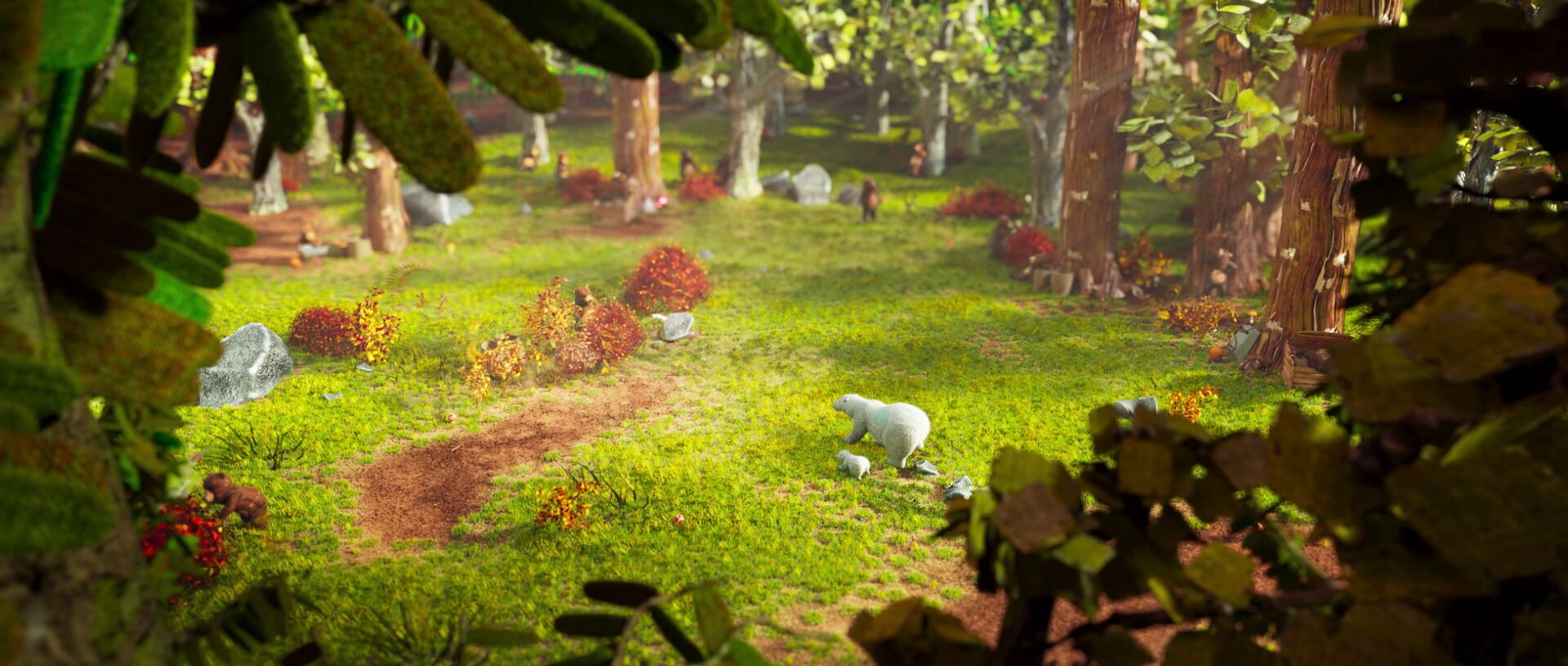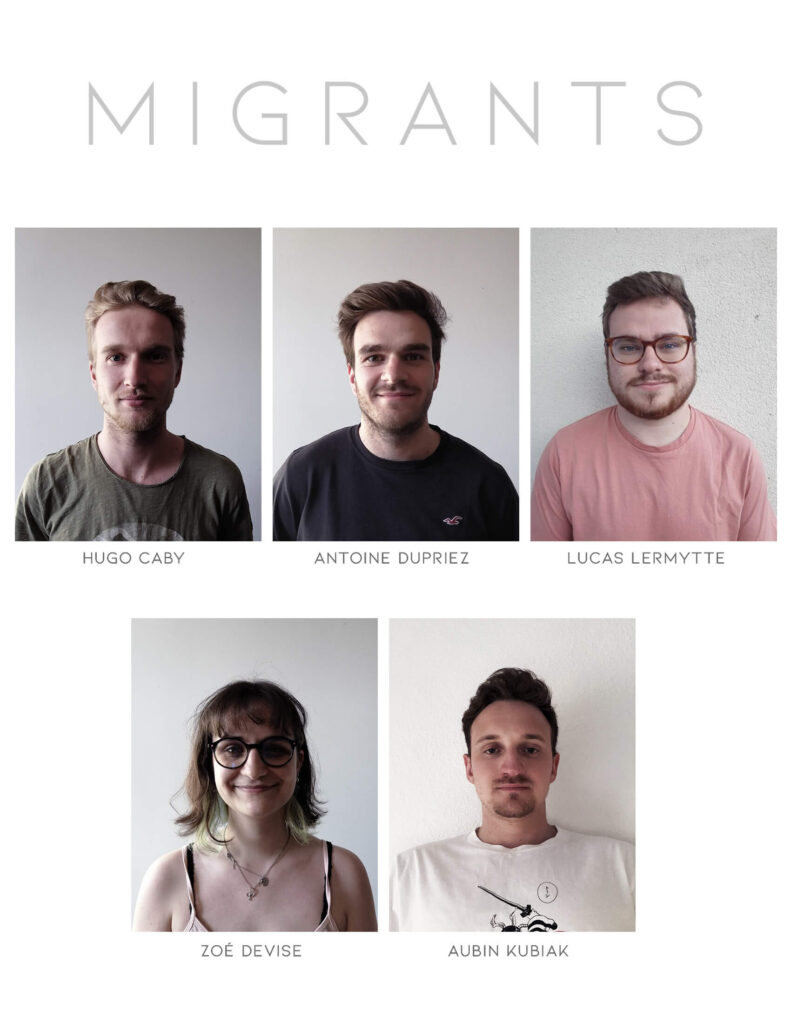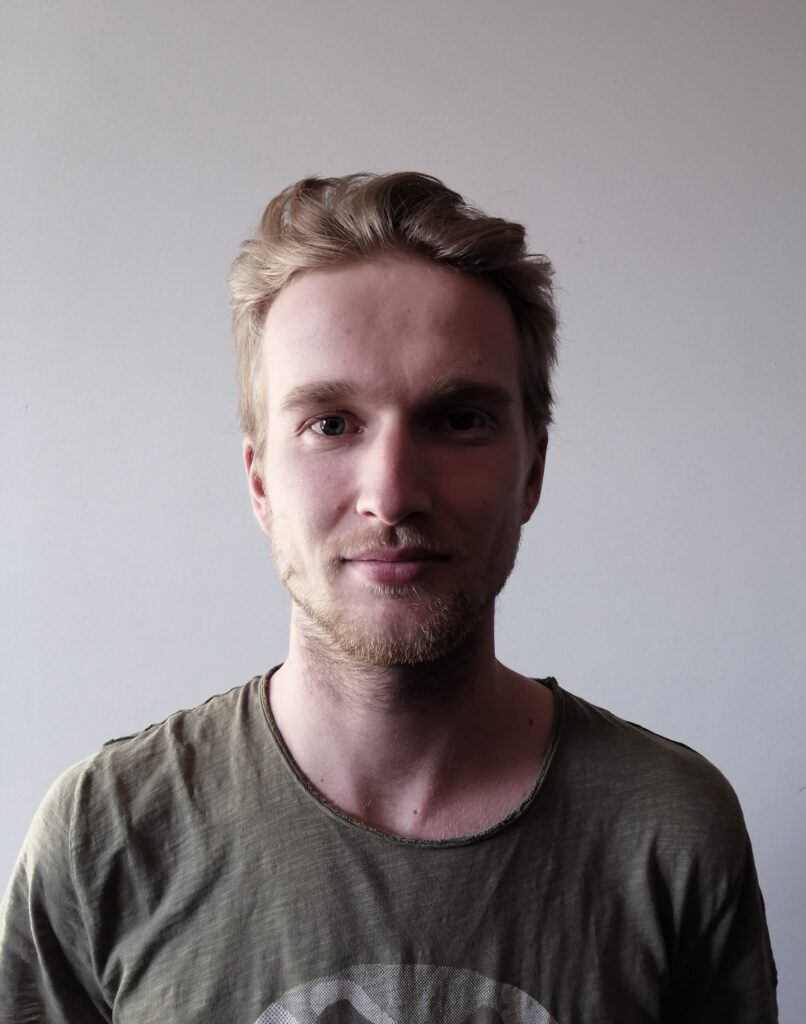Pôle 3D
It has been a whirlwind 2021 and we’re sad to say the SIGGRAPH 2021 Computer Animation Festival Electronic Theater is over. Though we may have closed this chapter, we can’t help but continue to celebrate the incredible projects that were featured. In this interview, get to know one of the directors behind the Best in Show-winning student short film, “Migrants”. Continue reading as Hugo Caby shares insight on the filmmaking process and the inspiration for the short film.
SIGGRAPH: How was the process of creating “Migrants” different from other projects you worked on in school or have worked on since?
Hugo Caby (HC): As we were students when creating the film, we faced many steps of production for the first time — fur on characters, visual effects (VFX), quadrupled animation, etc. I think what was most different for “Migrants” is that we were always learning during the process. It was also our own project so we were free to come up with new ideas, and, as students, we could afford some time to test many things. We learned a lot. [See full team in picture to the right.]
SIGGRAPH: What was the most technically challenging aspect of working on “Migrants”? How did you overcome it?
HC: I think the technical challenge we spent the most time on was to achieve a good pipeline until the 3D render. We gathered a lot of things together for one scene to our rendering engine, Guerilla Render — set dressing, lighting, point clouds for instances generation — and a lot of characters with fur. Before rendering, we also had one step for post-animation simulations. Merging all of this information while making sure everything is being read correctly by the rendering engine was a long process. We overcame it with great communication between all departments, and with teachers and Guerilla dev support.
SIGGRAPH: You shared a lot of incredible insight about the visual style of “Migrants” with 3DVF in an article earlier this month. When it comes to your choice to use varied textures on screen in the environments of the short, can you walk our readers through the texture that was the most difficult to produce and why?
HC: For the characters, the polar bear was the most difficult in terms of texture because of the wool. We worked a lot on UV to get good seams and apply the pattern as we wanted. The texture had to fit well with the thin fur layer, so we tested and tweaked a lot. For the environments, the most difficult texture was the tree bark because we knew it would be the most present/visible in the film. We did the bark in [Adobe] Substance 3D Designer and played a lot with the attributes to find an interesting look; the texture’s scales were really important. The bark material was a combination of some grunge map and geometric shapes of different sized tilings to achieve more stylized assets.
With one Substance Designer script, we were able to create 80% of the bark textures in the film.

SIGGRAPH: Attention to story and how a short makes its audience feel is a big part of the jurying process for the Electronic Theater. You shared in a segment for the Director’s Cut and in a Directors’ Panel that you wanted the short to touch on current societal issues. Was there one particular migrant story that led to the final short?
HC: Yes, one story inspired us particularly for the short. In 2018, there was a controversy about the “Aquarius” boat, which had rescued migrants in the Mediterranean Sea. No country wanted to allow the boat to land at its ports. We were touched by this, and we were inspired by that event as the subject for our movie, so we made a story about the issue of migration — but with a global warming theme layered on top of it. We made polar bears our main characters because they are one of the species most affected by climate change.
SIGGRAPH: Congratulations on winning Best in Show in the Electronic Theater! Your short film has received many accolades since its release and distribution. What has winning the top prize at SIGGRAPH meant to you?
HC: We are very proud of the success our short film has received from different festivals. But, for the SIGGRAPH Best in Show award, it was another level of excitement! We knew about SIGGRAPH before and knew it as a prestigious event that showcases high-level productions. Being among the other short films was very rewarding. We may have dreamed of getting the Best Student Project award, so we were surprised to win Best in Show with our student film. It is an incredible recognition by industry professionals!
SIGGRAPH: What advice do you have for student filmmakers submitting their work to the Electronic Theater in future years?
HC: If you are a student making a short film, my advice would be to put all your energy into it. Because it’s a chance to make your own film, and be supported by a pedagogic team during the process. The next time you will have the chance to produce your own film is probably not tomorrow, so you don’t want to regret anything.
Tickets are no longer available for the SIGGRAPH 2021 Electronic Theater; however, screening requests can now be submitted for its Traveling Show version, which includes “Migrants” and other award winners. Learn more and express interest today.
Hugo Caby has graduated from from the Pôle 3D school in Roubaix. With Antoine Dupriez, Aubin Kubiak, Lucas Lermytte and Zoé Devise, he co-directed the film “Migrants”.





